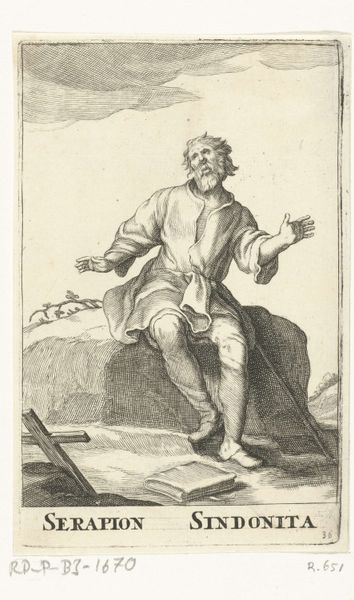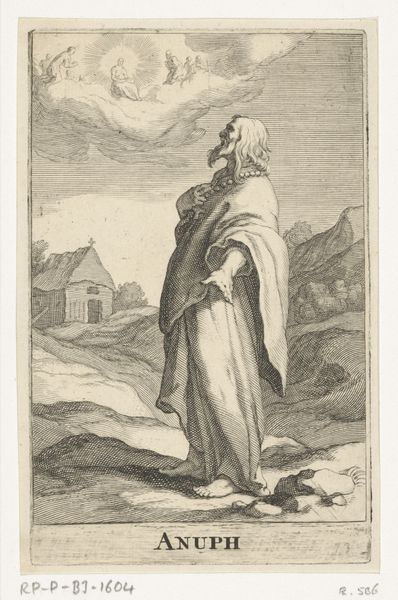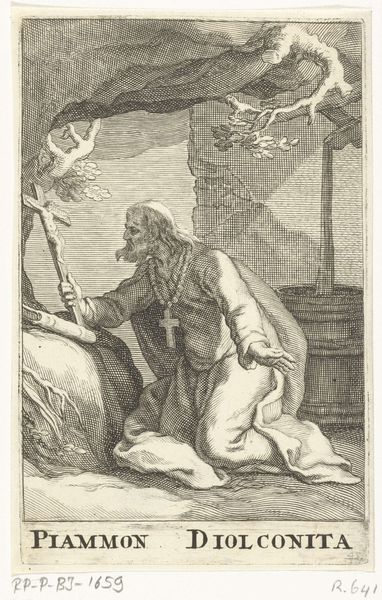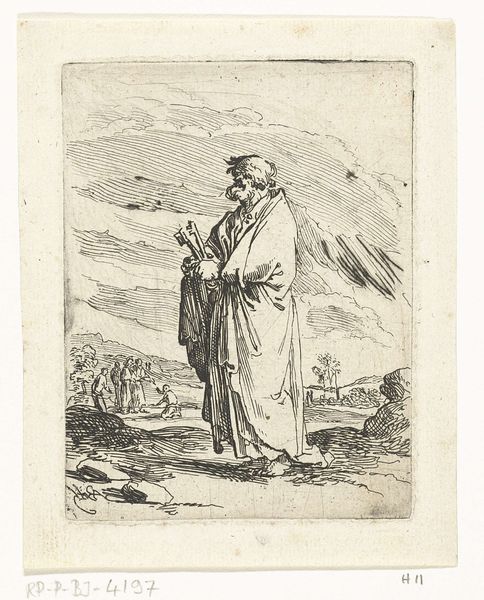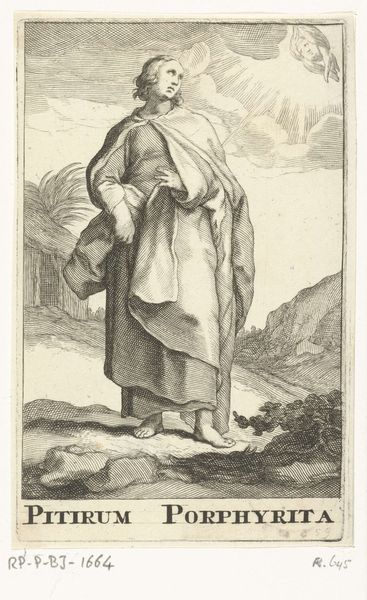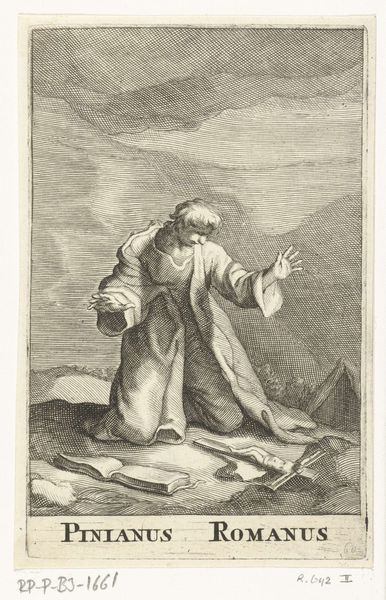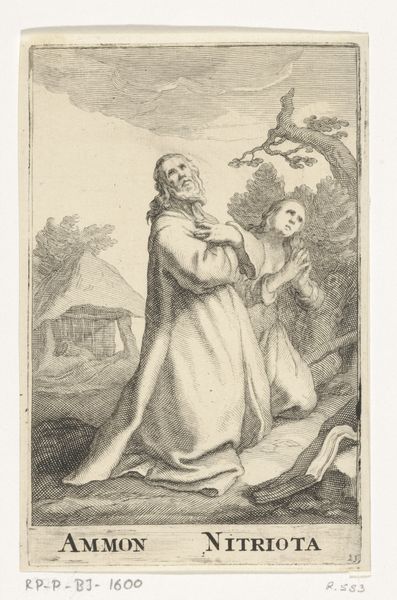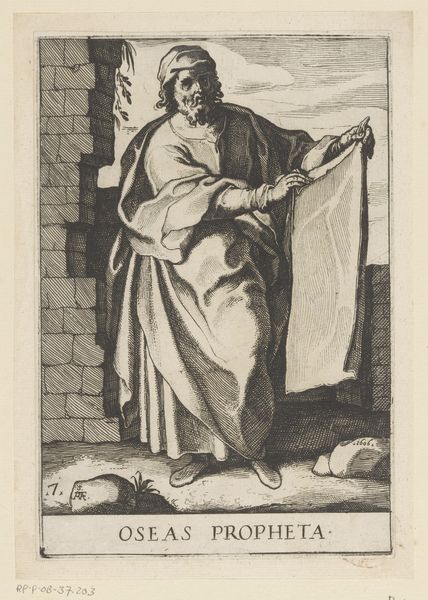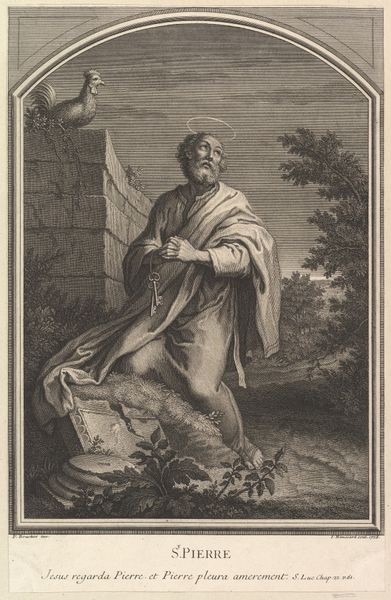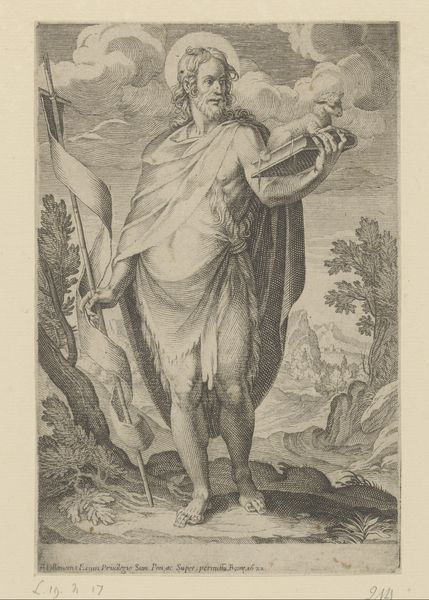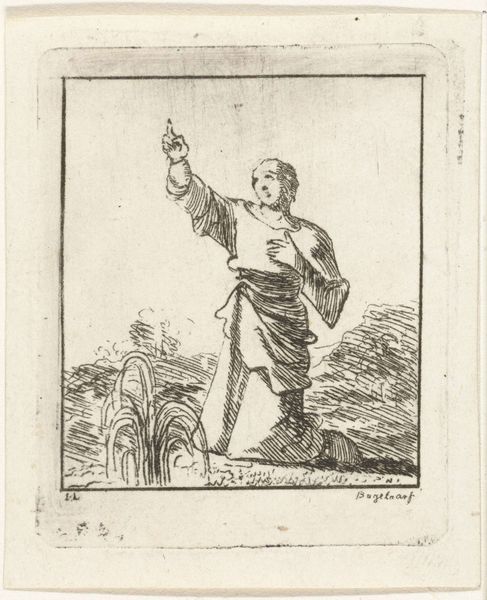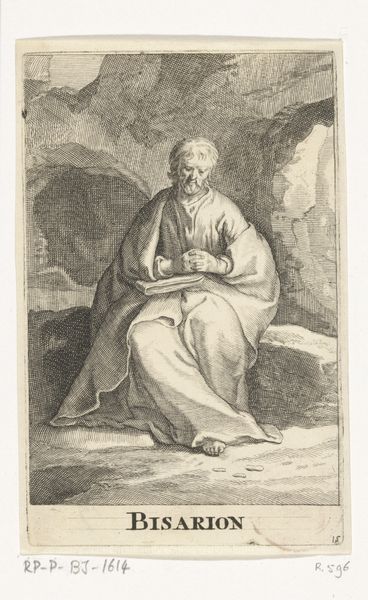
print, etching, engraving
#
baroque
# print
#
pen illustration
#
etching
#
pencil sketch
#
old engraving style
#
landscape
#
figuration
#
line
#
history-painting
#
engraving
Dimensions: height 135 mm, width 85 mm
Copyright: Rijks Museum: Open Domain
Editor: This is "Heilige Helenus" by Frederick Bloemaert, created sometime after 1636. It's an etching and engraving – a print, essentially. I’m struck by how serene the figure seems, despite carrying what looks like burning embers. The landscape behind him adds to the almost unsettling peacefulness. What’s your read on this, Professor? Curator: Oh, I'm drawn to that very juxtaposition, too! He carries fire, potentially destruction, yet possesses a gaze directed towards some inner, unseen landscape. Tell me, what does that house in the background suggest to you? A humble dwelling, perhaps, a connection to a simpler, more rustic existence? It speaks to the Baroque interest in both grandeur and the everyday. Editor: I didn’t really notice the house, to be honest. I was more focused on his robes. Do you think they were meant to elevate him somehow? I guess what I’m asking is, why that garb when he’s walking through what looks like the countryside? Curator: Ah, yes, the drapery! Consider this: Bloemaert, working after 1636, inherits a rich visual language. The robes aren't merely decorative, but an indicator of Helenus’s status, linking him to classical antiquity, to prophecy and, perhaps, to a rejection of earthly possessions despite that cozy looking house. His inner sight, indicated by his gaze and the otherworldly glow, transcends the material world surrounding him, which I find incredibly poetic. Editor: So it’s not necessarily a literal depiction, but more symbolic? It's interesting how much information you can pack into a simple line etching like this. Curator: Precisely! Line work is never simply line work! And you're correct; It's the power of suggestion, the echo of stories untold, which make it so incredibly engaging. It is interesting what stories can emerge in simple lines. Editor: I think I'm starting to appreciate how much context I miss just by looking at the surface of a piece. Thank you, I will be looking more to houses going forward. Curator: And I am remembering, after all of our digging into antiquity, that even the coziest countryside holds a world of narrative and symbolism if we simply learn to look.
Comments
No comments
Be the first to comment and join the conversation on the ultimate creative platform.
